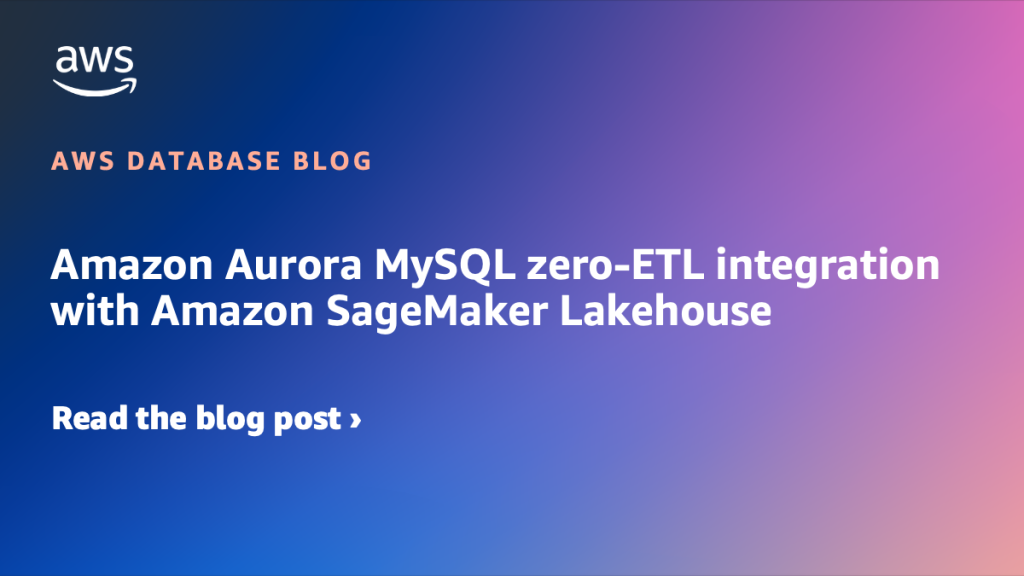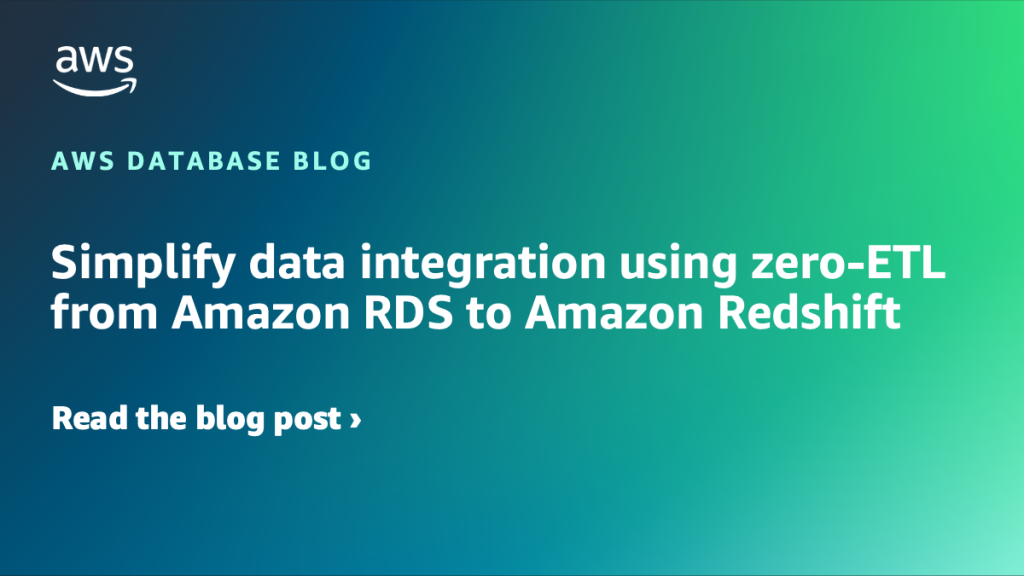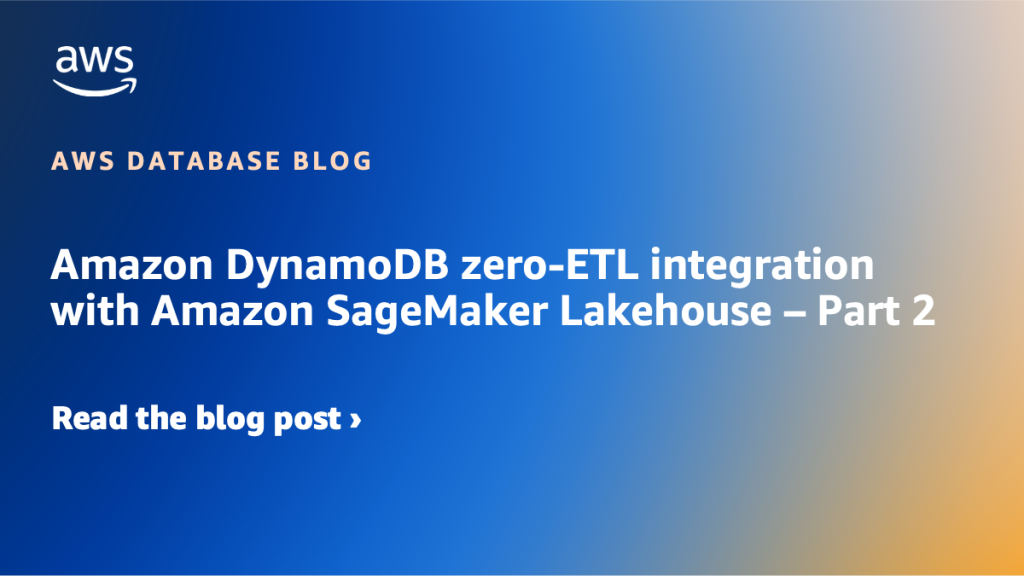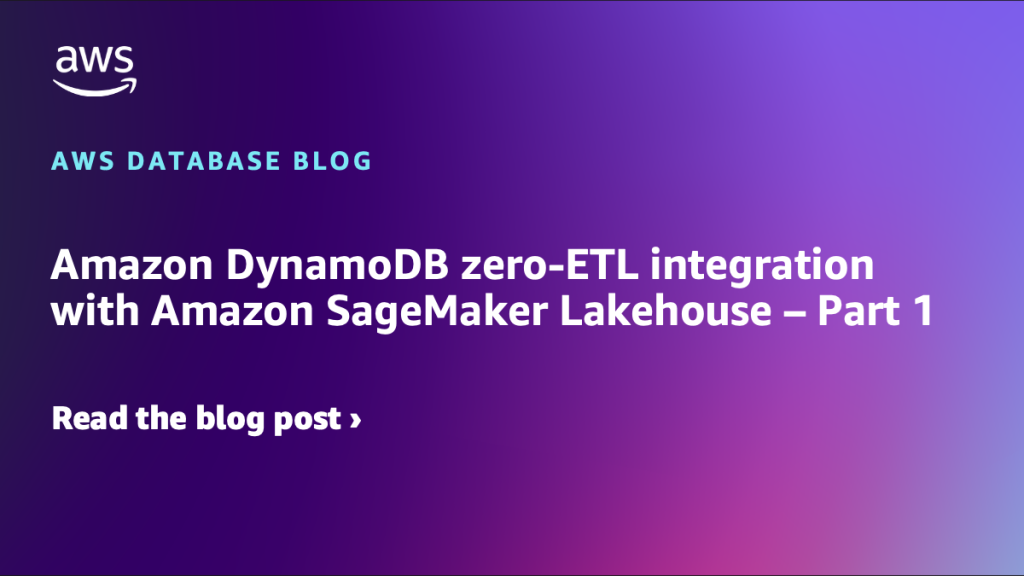AWS Database Blog
Tag: zero-ETL
Amazon Aurora MySQL zero-ETL integration with Amazon SageMaker Lakehouse
In this post, we explore how zero-ETL integration works, the key benefits it delivers for data-driven teams, and how it aligns with the broader zero-ETL strategy in AWS services. You’ll learn how this integration can enhance your data workflows, whether you’re building predictive models, entering interactive SQL queries, or visualizing business trends. By eliminating traditional extract, transform, and load (ETL) processes, this solution enables real-time intelligence securely and at scale to help you make faster, data-driven decisions.
Simplify data integration using zero-ETL from Amazon RDS to Amazon Redshift
Organizations rely on real-time analytics to gain insights into their core business drivers, enhance operational efficiency, and maintain a competitive edge. Traditionally, this has involved the use of complex extract, transform, and load (ETL) pipelines. ETL is the process of combining, cleaning, and normalizing data from different sources to prepare it for analytics, AI, and […]
Amazon DynamoDB zero-ETL integration with Amazon SageMaker Lakehouse – Part 2
Amazon DynamoDB zero-ETL integration with Amazon SageMaker Lakehouse allows you to run analytics workloads on your DynamoDB data without having to set up and manage extract, transform, and load (ETL) pipelines. In this post we cover setting up Amazon SageMaker Unified Studio, followed by running data analysis to showcase its capabilities. We illustrate our solution walkthrough with an example of a credit card company that wants to analyze its customer behavior and spending trends.
Amazon DynamoDB zero-ETL integration with Amazon SageMaker Lakehouse – Part 1
Amazon DynamoDB zero-ETL integration with Amazon SageMaker Lakehouse allows you to run analytics workloads on your DynamoDB data without having to set up and manage extract, transform, and load (ETL) pipelines. In this two-part series, we first walk through the prerequisites and initial setup for the zero-ETL integration. In Part 2, we cover setting up Amazon SageMaker Unified Studio, followed by running data analysis to showcase its capabilities. We illustrate our solution walkthrough with an example of a credit card company that wants to analyze its customer behavior and spending trends.
How Infosys used Amazon Aurora zero-ETL integration with Amazon Redshift for near real-time analytics and insights
In this post, we talk about how Infosys redefined the ETL landscape for their product sales and freight management application using Aurora zero-ETL to Amazon Redshift. We also explain our experience with the old process and how the new zero-ETL integration helped us effortlessly move data into a Redshift cluster for analytics along with metrics to monitor the health of the integration.
Achieve near real-time analytics with Amazon DynamoDB and zero-ETL for Amazon OpenSearch Service
In this post, we explore how to transition from using Rockset to OpenSearch Service for your DynamoDB use-case effectively. To illustrate this integration, we consider a real-world example of a gaming company that tracks user interactions, such as in-game purchases and player scores, using DynamoDB. This data needs to be analyzed in real time to provide insights into user behavior, detect anomalies, and personalize the gaming experience.





